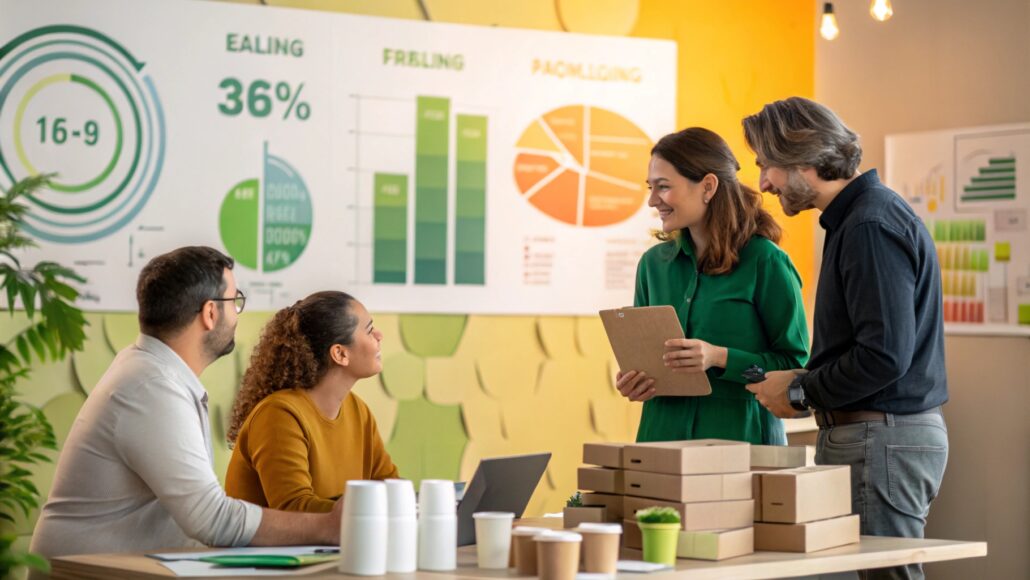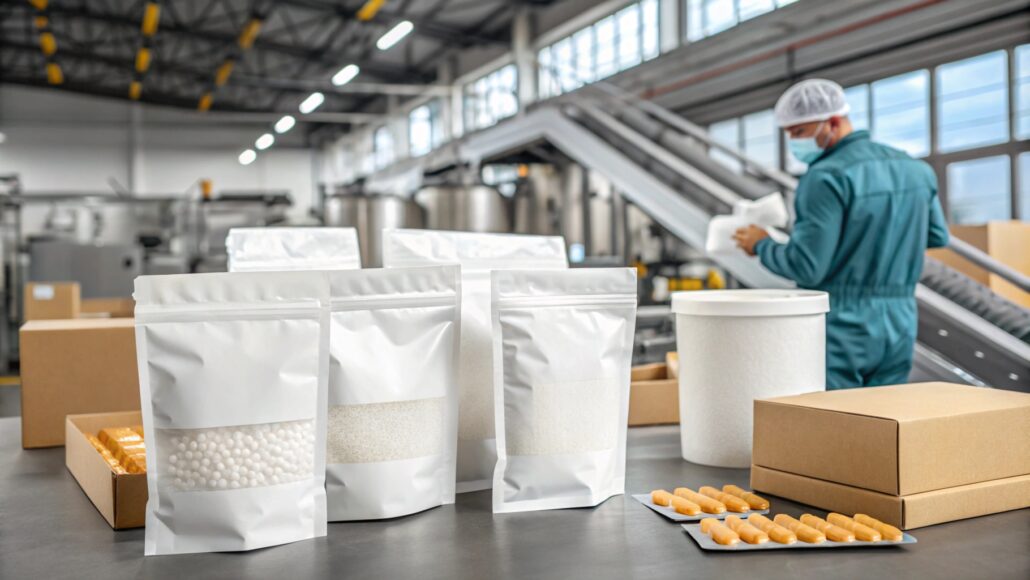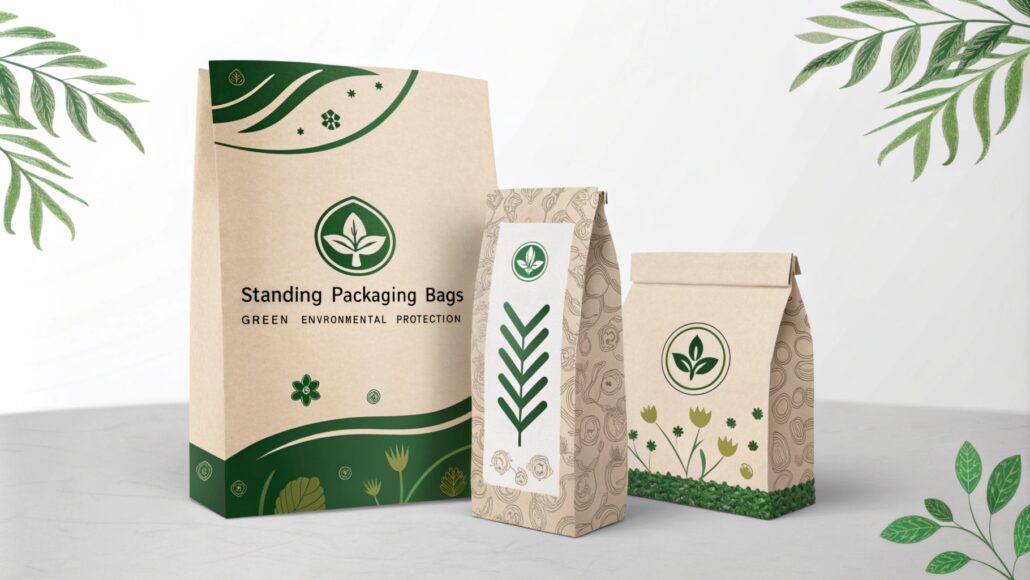
Finding the right packaging company is crucial for the success of your product. The right partner can enhance your brand image, ensure product protection, and help reduce costs.
The perfect packaging company combines quality, reliability, and competitive pricing. It must align with your specific product needs and meet delivery timelines.
As a business owner, partnering with the right packaging supplier can boost your product’s appeal and streamline your supply chain. Let’s explore how to choose the perfect company for your business.
[Table of contents]How to choose the right packaging for your product?
Choosing the right packaging is about more than just looks; it’s about functionality, cost, and protecting your product throughout its journey.
The best packaging meets your product’s specific needs, from durability to visual appeal, while remaining cost-effective.

When selecting the right packaging, consider the following factors:
1. Product Protection
The primary role of packaging is to protect your product. Whether your product is fragile, perishable, or sensitive to environmental conditions, you need packaging that provides adequate protection. For example, a glass bottle will need thicker protective packaging like bubble wrap or foam inserts to prevent breakage during transport.
2. Functionality
The packaging must serve the intended function without unnecessary complexity. If you’re selling liquids, consider spill-proof pouches or spouted bags. For food products, food-safe materials are essential to ensure freshness and safety. Think about how customers will open the packaging and dispose of it – user-friendly packaging often drives repeat purchases.
3. Branding and Design
The packaging reflects your brand identity. The design should speak to your target audience and represent your values. Colors, logos, and fonts should align with your overall branding strategy. Keep in mind that attractive packaging can serve as a silent sales representative on store shelves or e-commerce platforms. Learn more about the importance of branding in packaging1.
4. Cost-Effectiveness
You must balance the cost of packaging with the quality it provides. Look for suppliers who offer cost-efficient options without compromising on quality. It’s also important to factor in shipping costs, as some packaging materials are heavier and could increase the overall shipping fee.
5. Sustainability
With growing environmental awareness, consumers are increasingly looking for sustainable products. If eco-friendly packaging is important to your brand, choose materials that are recyclable, biodegradable, or reusable. Some packaging suppliers even offer innovative solutions such as plant-based plastics or compostable pouches. Read more about the benefits of sustainable packaging2.
What are five key criteria for package selection?
Selecting the right packaging requires balancing a range of criteria that impact your product’s appeal, functionality, and overall costs.
The five key factors to consider when selecting packaging are material, functionality, cost, design, and sustainability.
1. Material Selection
Different products require different packaging materials. For example, if you’re packaging food, choose materials that are food-safe and provide an airtight seal to preserve freshness. Materials like polyethylene, PET, and aluminum foil are commonly used for food packaging, while corrugated boxes or kraft paper are ideal for heavier products like electronics or home goods. Learn more about packaging materials for food products3.
When selecting material, also consider the weight of the packaging. Lightweight materials can help reduce shipping costs, while heavier materials might be necessary for fragile items. A good packaging supplier will help you choose the right material for your product’s needs.
2. Functionality
Your packaging must protect your product during transport and storage while also being easy for your customers to use. For example, if you sell liquid products, you may want to use spouted pouches or stand-up pouches that prevent leaks and spills. If you’re selling an item like a piece of electronic equipment, durable packaging with inserts or dividers will ensure it’s well-protected during shipping.
Consider whether your packaging needs special features like tamper-evident seals, resealable closures, or child-resistant features, depending on the type of product you sell.
3. Cost Considerations
The cost of packaging has a direct impact on your profit margins. While it’s essential to choose quality packaging, you also need to keep an eye on production costs. Always request quotes from multiple suppliers to compare prices. Consider ordering in bulk to get better pricing and always inquire about discounts for long-term contracts or repeat orders.
Remember, the cheapest option may not always be the best choice. Sometimes, spending a little more on better materials can improve the overall customer experience and reduce damage rates during shipping.
4. Design and Branding
Packaging is a powerful marketing tool. It’s often the first thing consumers see, and it can directly influence their buying decisions. Your packaging design should be consistent with your brand’s identity and message. Use clear labeling, and make sure the product information is easy to find. For example, if you sell organic products, you might use earthy colors or natural textures in the design to emphasize the eco-friendly nature of your brand.
Good packaging design goes beyond aesthetics. It should also serve as a practical tool to inform customers about the product, how to use it, and how to dispose of it properly.
5. Sustainability and Eco-Friendliness
Consumers are becoming more eco-conscious, and many prefer products that use sustainable packaging. Packaging made from recyclable or biodegradable materials can make your product more attractive to this growing demographic. Working with suppliers that offer sustainable solutions can also help your business align with global environmental goals and meet regulatory standards.
Eco-friendly packaging also helps to reduce your brand’s carbon footprint. Choosing materials like glass, paper, or plant-based plastics helps promote sustainability and can be a great selling point.
How do I make my product packaging stand out?
Standing out on the crowded shelves of stores or in a competitive online market requires packaging that not only protects your product but also captures attention.
Unique, eye-catching packaging can increase your product’s visibility and create a memorable experience for your customers.

1. Use Bold and Unique Designs
The design of your packaging plays a huge role in making your product stand out. This could mean choosing vibrant colors or using bold typography. For instance, packaging for beauty products often uses sleek, elegant designs that convey luxury. On the other hand, snack foods might use fun, playful designs that appeal to younger audiences.
Make sure the design complements the product’s identity and target audience. Innovative shapes and colors can grab attention and make the product easier to recognize in stores or online.
2. Incorporate Custom Features
Customized packaging features like embossing, debossing, or foil stamping can add a high-end feel to your packaging and differentiate your product from competitors. Consider adding window pouches, unique closures, or even 3D designs to give your packaging an interactive element.
Special effects, such as holographic finishes or textured surfaces, can elevate the appearance of your packaging, making it more memorable for customers. Learn more about custom packaging features4.
3. Tell a Story Through Packaging
Packaging can serve as an extension of your brand’s story. Use your packaging to share a message with your customers – whether it’s about the product’s origin, the production process, or your sustainability efforts. Telling a compelling story can create an emotional connection with consumers and encourage them to choose your product over others.
Include clear and engaging messaging on the packaging that tells the consumer what the product is, how it’s made, and why it’s better than others.
4. Leverage Eco-Friendly Options
More consumers are gravitating toward sustainable products. Eco-friendly packaging can differentiate your brand by showing that you care about the environment. Using materials that are recyclable, compostable, or made from renewable resources can give your product a distinct edge.
Highlighting the eco-friendliness of your packaging on the label can attract customers who prioritize sustainability in their purchasing decisions.
How do I choose a packaging supplier?

Choosing a packaging supplier is a critical decision that can affect the quality, cost, and reliability of your product’s packaging.
A reliable packaging supplier should offer high-quality materials, efficient production timelines, and responsive customer service.
1. Evaluate Quality and Reliability
Your packaging supplier must provide consistent, high-quality packaging that meets your standards. You should ask for samples before placing an order, ensuring that the materials meet your requirements for strength, durability, and aesthetic appeal.
2. Assess Communication and Customer Service
Good communication is essential in a packaging partnership. Choose a supplier who is responsive, listens to your needs, and offers valuable advice. A supplier that can easily communicate in your time zone, and is transparent about costs and timelines, will reduce stress during production.
3. Consider Lead Times and Flexibility
Fast production and delivery are essential to keeping your supply chain efficient. Choose a supplier that can meet your delivery deadlines without compromising quality. They should also be flexible enough to handle changes in order quantity or last-minute design revisions.
4. Look for Competitive Pricing
Cost is always a consideration. However, do not compromise on quality for the sake of a lower price. Make sure the supplier provides transparent pricing and understands what you’re getting for your investment. Consider bulk orders or long-term contracts to reduce costs over time.
5. Sustainability Practices
If sustainability is important to your brand, choose a supplier who prioritizes eco-friendly practices. Suppliers who use sustainable production methods, recyclable materials, or offset their carbon footprint can help align your packaging with your company’s environmental goals.
Conclusion
Finding the right packaging company can be a game-changer for your business. By selecting packaging that protects your product, reflects your brand, and meets your customers’ expectations, you can enhance both customer satisfaction and your bottom line.

Footnotes
This article explains how good packaging design can influence consumer decisions and boost your product’s brand image. ↩
Click to learn about the growing importance of eco-friendly packaging and its benefits for your business and the environment. ↩
Get more information about the best packaging materials used for food safety and freshness. Learn why these materials are crucial for your food products’ protection. ↩
Explore how customized packaging features like embossing and holographic finishes can make your product stand out in the marketplace. ↩
